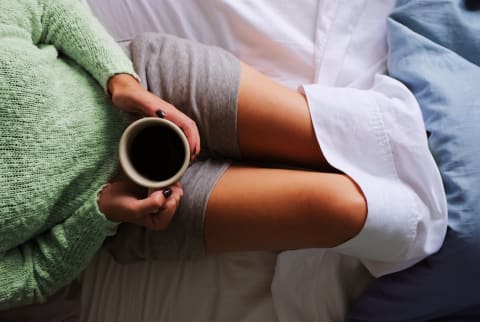Advertisement

Bladder control problems are a lot more common than you think; in fact, there are over 13 million people in the United States who are affected by urinary incontinence. The misnomer is that this is an "old woman problem" because the truth is that 10 percent of women between 19 and 30 years old have experienced bladder leaks. Urinary incontinence is twice as prevalent in women as men, and left untreated, it can be debilitating. Women of all ages should be proactive about implementing lifestyle changes and habits to improve bladder health, in addition to consulting physicians for recommended treatment plans.
Let's talk about the science of the bladder.
The bladder is a muscle where urine is temporarily stored. It's located behind the uterus in women and held in place by ligaments in the pelvis behind the pelvic bones. The size of the urinary bladder varies depending on the amount of urine it contains. When empty, it is normally no longer than 2 to 3 inches. A urinary bladder that is moderately full measures about 5 inches in length and holds just over 1 pint of urine. When completely full, the urinary bladder can contain over 2 pints of urine. The walls of the urinary bladder contract to release urine out of the bladder into the urethra.
Sphincters—or a muscle surrounding a bodily opening that helps it open and close—help keep urine from leaking. The sphincter muscles close tightly like a rubber band around the opening of the bladder into the urethra, the tube that allows urine to pass outside the body. Nerves in the bladder tell you when it's time to empty your bladder (use the bathroom). As the bladder first fills with urine, you may notice a feeling that you need to urinate. The sensation to urinate becomes stronger as the bladder continues to fill and reaches its limit. At that point, nerves from the bladder send a message to the brain that the bladder is full, and your urge to empty your bladder increases. When you urinate, the brain signals the bladder muscles to tighten, squeezing urine out of the bladder. At the same time, the brain signals the sphincter muscles to relax. As these muscles relax, urine exits the bladder through the urethra. When all the signals occur in the correct order, normal urination occurs.
Here's what everyone gets wrong about bladder issues:
1. Urinary incontinence affects only older women.
A recent national survey by Always Discreet found that half of women admit bladder leaks affect their personal confidence when they’re doing things they enjoy. The reality is that one in three women ages 18 to 75 experience bladder leaks of some sort.
2. There is no treatment for urinary incontinence.
There are different treatments based on the type of incontinence you have. There are exercises, changes in the types of fluids you drink, bladder training, etc.
3. You MUST have surgery to treat your urinary incontinence.
As mentioned previously, there are treatments that do not involve surgery, and there are a lot of options to try before you consider something invasive.
4. Drinking less fluid will improve urinary incontinence.
Many ladies believe that decreasing their fluid intake will prevent urinary incontinence, but severely limiting fluids leads to more concentrated urine, which irritates the bladder and makes the problem worse.
5. You have to wear ugly diaper-like products to help with bladder leaks.
Typically, when women think about bladder leak protection, their minds immediately go to the diaper-looking products on the market. But the truth is that there are a lot of options these days that aren't bulky or embarrassing.
Here are the quick (and natural!) ways to treat urinary incontinence.
Quit smoking: Besides the obvious health benefits of quitting, chronic coughing can put extra stress on the bladder.
Quit caffeine: Caffeine irritates the bladder and can make incontinence worse. Try turning to herbal teas or water.
Kegel exercises: Tightening and releasing the pelvic floor muscles. Here's how to do the perfect Kegel exercise.
Bladder training: It's possible to retrain your body by scheduling specific times to use the bathroom.
Acupuncture: Research suggests that getting acupuncture can improve symptoms of urinary incontinence.
Stay hydrated: It may seem counterintuitive, but staying hydrated can help keep the bladder functioning properly.
